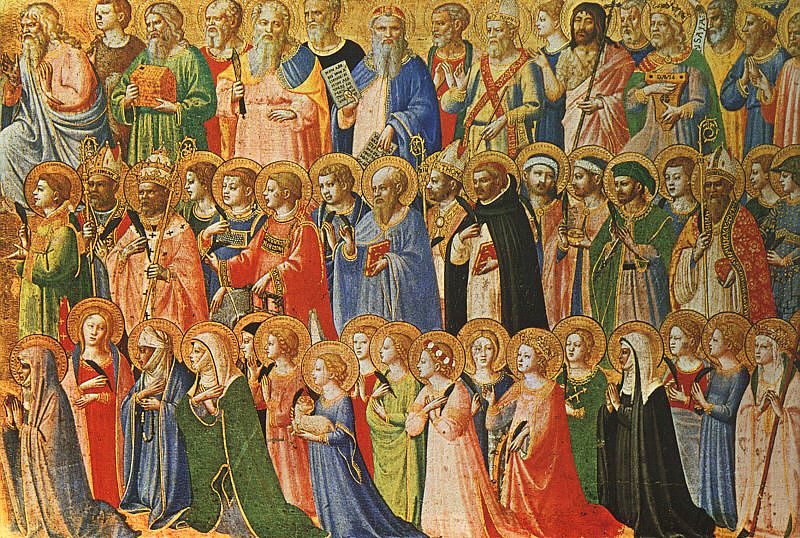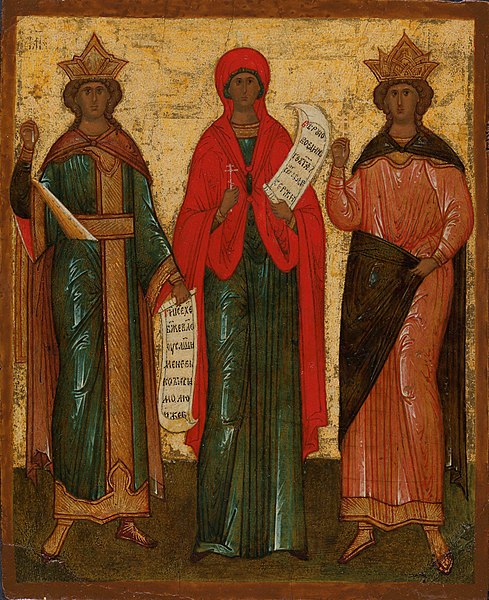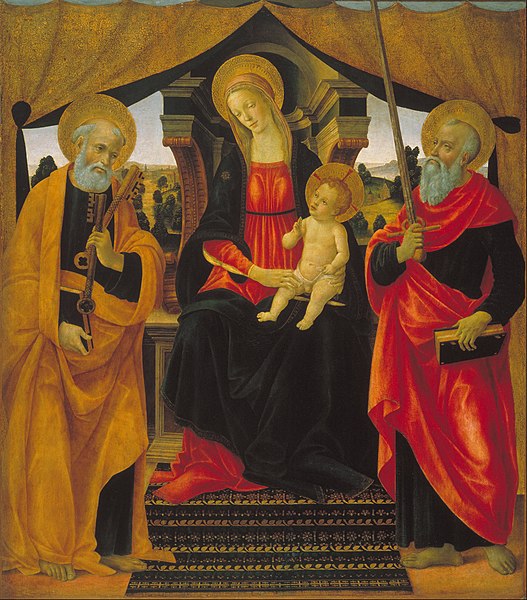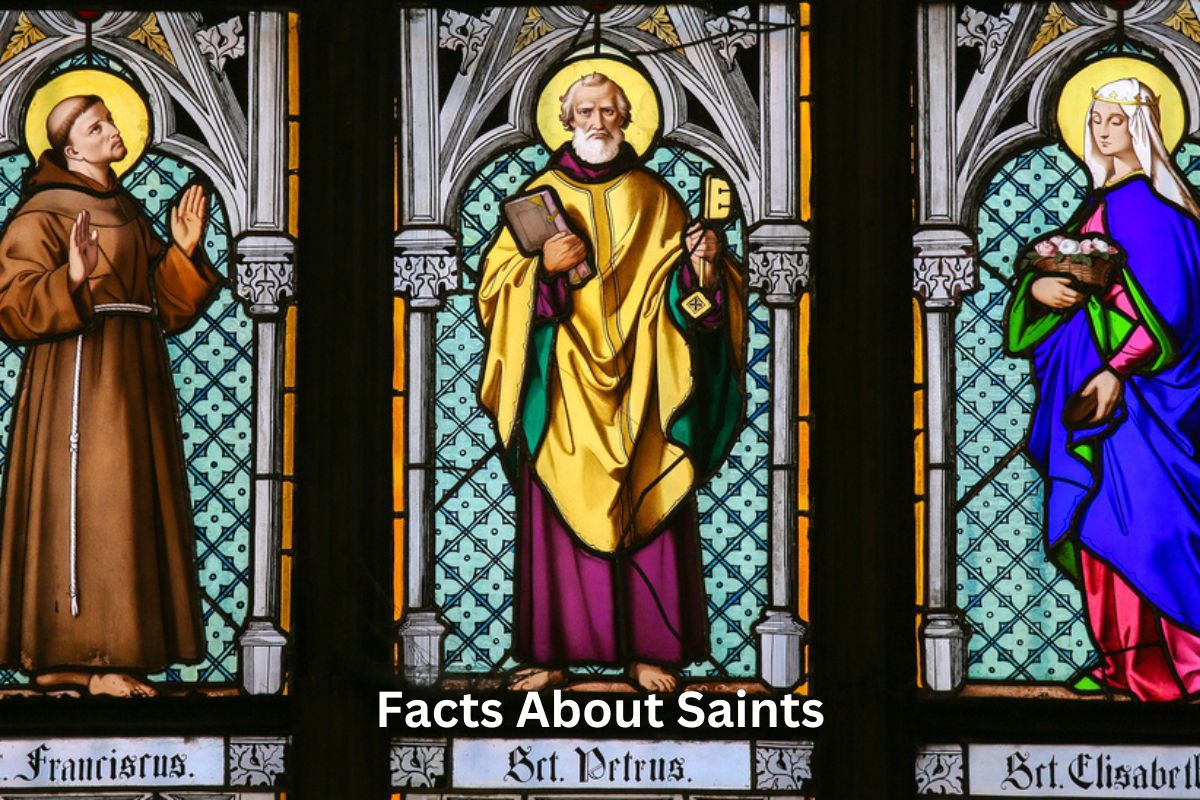Saints are revered individuals recognized in various religious traditions around the world. They are celebrated for their extraordinary faith, virtue, and contributions to their respective communities.
Whether in Christianity, Islam, Hinduism, Buddhism, Sikhism, or other faiths, saints hold a special place in the hearts and minds of believers.
They are often associated with specific areas of patronage, have designated feast days, and are depicted in religious art.
Saints serve as role models, intercessors, and sources of inspiration, enriching the spiritual and cultural heritage of their respective religions.
Saints Facts
1. Saints are revered in various religions
Saints are revered individuals who hold a special place in various religions worldwide. These individuals are typically seen as models of faith, morality, and piety.
Also Read: Facts About St Joseph
While the concept of saints varies from one religion to another, they are universally celebrated for their spiritual qualities and the positive impact they have had on their respective communities.

2. Christianity recognizes saints for holy and virtuous lives
In Christianity, saints are individuals who are considered exceptionally holy and virtuous.
They are often recognized for their extraordinary faith, charitable acts, and dedication to living in accordance with the teachings of Jesus Christ.
Also Read: St Michael Facts
Saints are held in high regard and are considered exemplary figures for Christians to emulate. They are believed to have a special place in heaven and are often invoked as intercessors between God and believers.
3. Canonization is the process of recognizing saints in the Catholic Church
In the Roman Catholic Church, the process of recognizing and declaring an individual as a saint is known as canonization. This process involves several rigorous steps, including:
- Investigation: The candidate’s life and deeds are thoroughly examined by the Church, including historical records, writings, and testimonials.
- Beatification: If the candidate’s life is found to be exceptionally virtuous and if miracles are attributed to their intercession, they may be beatified, which means they are granted the title “Blessed.”
- Canonization: To become a saint, the candidate must be canonized by the Pope. This requires the verification of at least two miracles attributed to the candidate’s intercession. Once canonized, the individual is officially recognized as a saint, and their feast day is celebrated within the Church.
Canonization is a significant event in the Catholic Church, and saints hold a special place in the hearts of Catholics as intercessors, role models, and sources of inspiration for leading holy lives.
4. Saints often have specific areas of patronage
Saints are often associated with specific areas of patronage or responsibility. These associations arise from the saint’s life experiences, deeds, or historical connections.
For example:
- Saint Patrick is the patron saint of Ireland, and his feast day, St. Patrick’s Day, is celebrated with parades and festivities in Ireland and by Irish communities worldwide.
- Saint George is the patron saint of England and is often depicted slaying a dragon. His feast day, St. George’s Day, is celebrated in England.
- Saint Valentine is the patron saint of lovers, and Valentine’s Day is celebrated as a day of love and affection in many countries.
These patronage associations make saints relevant in the daily lives and cultural traditions of believers and regions.

5. Many saints are martyrs
A significant number of saints in various religious traditions, particularly within Christianity, are martyrs. A martyr is someone who willingly suffers persecution, torture, or even death for their religious beliefs or faith.
Also Read: Facts About St Catherine of Siena
These individuals are considered to have made the ultimate sacrifice for their convictions, and their steadfastness in the face of adversity is often celebrated. Martyrs are seen as shining examples of unwavering faith and commitment to their religious principles.
For example, Saint Stephen, the first Christian martyr, was stoned to death for his beliefs, and Saint Sebastian is often depicted as a martyr who was shot with arrows for his faith.
6. They have designated feast days
Most saints have a specific day on the liturgical calendar of their respective religious tradition dedicated to their commemoration. These days are known as feast days, and they are an occasion for special religious services, prayers, and celebrations.
On a saint’s feast day, believers often gather to honor the saint’s life and deeds, seek their intercession in prayers, and celebrate their contributions to the faith.
For example, Saint Patrick’s feast day is celebrated on March 17th in honor of Ireland’s patron saint, and it includes parades, traditional music, and festive events. Similarly, Saint Francis of Assisi’s feast day is celebrated on October 4th with blessings of animals, reflecting his love for nature and animals.
Feast days are an important part of religious tradition and serve to keep the memory and legacy of saints alive in the hearts and minds of believers.

7. Saints are depicted in religious art
Saints are frequently depicted in religious art, including paintings, sculptures, icons, and stained glass windows. These artistic representations often have distinct attributes or symbols associated with each saint, making it easier for viewers to identify them. These symbols are usually related to the saint’s life, deeds, or attributes.
For example, Saint Peter is often depicted holding keys, symbolizing his role as the “keeper of the keys to heaven” in Christian tradition.
Saint Catherine of Alexandria is frequently shown with a wheel, as she is said to have been condemned to be tortured on a spiked wheel, which miraculously broke when she touched it.
Religious art serves to inspire devotion, educate believers about the lives of saints, and provide a visual connection to the sacred.
8. Eastern Orthodox Church also venerates saints
In addition to the Roman Catholic Church, the Eastern Orthodox Church also venerates saints. However, the process of recognizing and venerating saints in the Eastern Orthodox tradition differs from that of the Catholic Church.
Saints in the Eastern Orthodox Church are often chosen through popular acclaim, and their recognition may be more decentralized compared to the centralized canonization process in Catholicism.
Eastern Orthodox saints are highly revered and play a significant role in the spiritual life of Orthodox Christians. Icons of saints are prominently displayed in Orthodox churches, and believers often seek their intercession in prayer.
9. Islam has Sufi saints
In Islam, Sufi saints, also known as “Wali Allah” or “friends of God,” hold a special place. These individuals are revered for their deep spirituality, piety, and closeness to Allah (God).
Sufi saints are often considered guides and spiritual mentors for Sufi practitioners. They are believed to have attained a state of spiritual enlightenment and are seen as sources of divine wisdom.
Sufi saints are commemorated through various practices, including the recitation of poetry, devotional music, and pilgrimage to their tombs or shrines. Their teachings emphasize the importance of love, humility, and the mystical experience of God.
10. Sikhism reveres Gurus and saints
Sikhism, founded in the Indian subcontinent, holds deep reverence for its ten Gurus, who are considered spiritual leaders and guides for the Sikh community. While Sikhs primarily venerate their Gurus, they also acknowledge the contributions of other prominent Sikh saints, scholars, and historical figures.
Sikh saints, such as Guru Nanak Dev Ji, Guru Angad Dev Ji, and Guru Ram Das Ji, have made significant contributions to Sikh theology, ethics, and spirituality. Their teachings and hymns are central to Sikh religious practices, and Sikhs often visit gurdwaras (Sikh temples) to pay their respects and seek spiritual guidance.
Saints and revered figures play diverse and essential roles in various religious traditions, from inspiring art and devotion to guiding believers’ spiritual journeys and shaping the religious and cultural practices of their respective communities. These figures serve as bridges between the divine and the human, offering wisdom, inspiration, and a sense of connection to the sacred.
